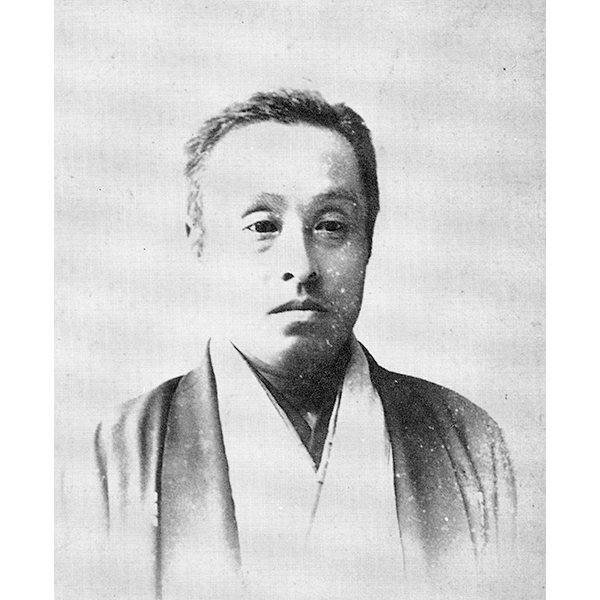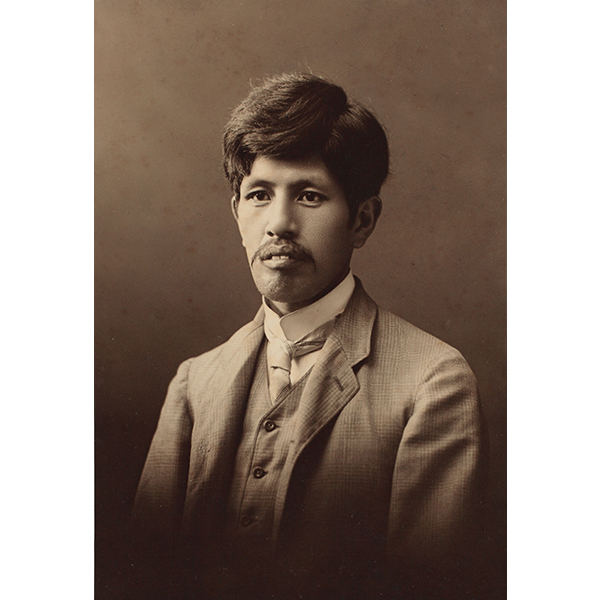Preface
This thematic exhibition sheds light on the trajectory of art history research in Japan. It aims to unveil how well-recognized Japanese artworks were studied between the Meiji and Shōwa eras, from the latter half of the 19th century to the end of the 20th century, through notebooks that scholars used to record their research findings, along with some actual artworks. Based on their research, the scholars theorized about unknown details of viewed artworks, such as the artists and the dates of creation, and evaluated their own hypotheses. Through the records kept by these scholars in their notebooks, visitors are invited to re-appreciate the importance and enjoyment of looking closely at artworks.
Profiles of Art Historians
Imaizumi Yūsaku(1850〜1931)

Imaizumi was born in Hacchōbori District, Edo (present-day Tokyo) as the child of an official serving at the Town Magistrate. He worked at the Ministry of Education, Tokyo School of Fine Arts (now Tokyo University of the Arts), and the Tokyo Imperial Household Museum (now Tokyo National Museum). Along with the renowned scholar and official Okakura Tenshin, Imaizumi contributed to building the foundation of art administration in modern Japan. Imaizumi’s hand-written, 38-volume diary, titled [Kijishu], contains records of appraisals and research conducted between 1887 and 1913.
Hirako Takurei(1877〜1911)

Hirako was born in Tsu City, Mie Prefecture. “Takurei” is a pseudonym used by Hirako, whose real name is “Hisashi.”After studying Japanese and Western Painting at the Tokyo School of Fine Arts (now Tokyo University of the Arts), Hirako started working at the Tokyo Imperial Household Museum (now Tokyo National Museum), where he was engaged in research of Japanese art. He advocated a debatable theory that Hōryūji Temple was not reconstructed, and was at the forefront of Buddhist art research. Hirako died of a lung disease at the young age of 35.
Tanaka Ichimatsu(1895〜1983)

Tanaka was born in Tsuruoka City, Yamagata Prefecture. After graduating from the Art History Department, Faculty of Letters at the Tokyo Imperial University (now The University of Tokyo), he started working at the Tokyo Imperial Household Museum (now Tokyo National Museum) from 1924, and held a leading role in administration of cultural properties for over half a century. He then served as the Director of the Tokyo National Research Institute of Cultural Properties (now with the same name, but as part of the Independent Administrative Institution National Institutes for Cultural Heritage) from 1953 to 1965. Many of his publications concerned Buddhist painting, illustrated handscrolls, and ink painting.
Doi Tsugiyoshi(1906〜1991)

Doi was born in Osaka. After completing high school, Doi entered the Department of Philosophy of the Faculty of Letters at Kyoto Imperial University (now Kyoto University), where he studied aesthetics and art history. He served as an appraiser at the Imperial Gift Museum of Kyoto (now Kyoto National Museum) from 1930, and subsequently, in 1946, became the Director of this museum. Doi was also a professor at Kyoto Institute of Technology between 1949-70. Based on his research with a primary focus on panel paintings, Doi advocated a number of theories about artists from early modern Japan.